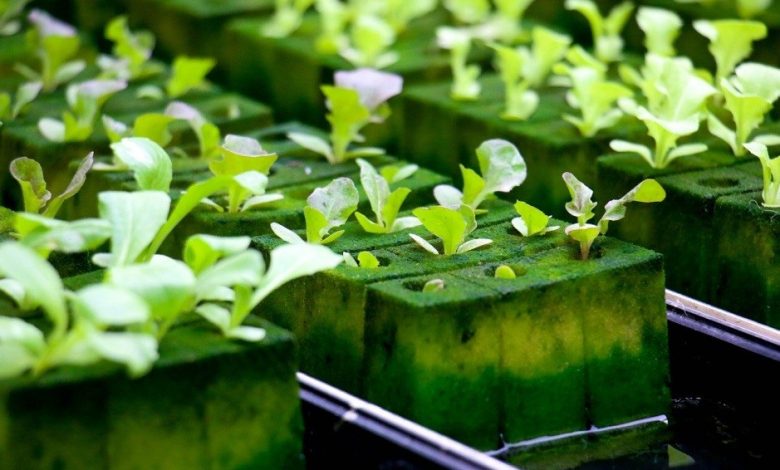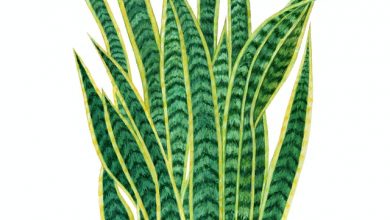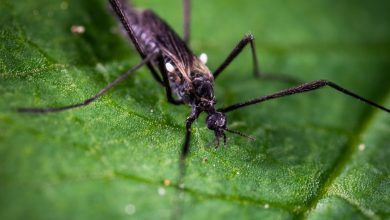Hydroponics Nutrient Solution Guide

Hydroponics is the process of growing plants in a solution of water and carefully prepared nutrients. Unlike traditional planting methods, hydroponics avoids the use of soil. Instead, plant roots are supported by a non-reactive medium, which could be clay pellets, rockwool, or peat moss.
The basis of hydroponics is to bring the plant roots into direct contact with the required nutrients for proper growth, while at the same time, supplying ample oxygen and sunlight, which are also essential for growth.
Seeing as hydroponics supplies plants with adequate nutrition, and that plant roots do not need to labor to obtain nutrients, as is the case with soils, a proper hydroponic setup will significantly accelerate plant growth and maturity.
As plant roots are relatively enclosed, evaporation is minimal; thus, hydroponic plants use less water as compared to soil-based plants. Also, the chances of pollution from soil runoff are practically non-existent.
Still, to reap the benefits that hydroponics promises, you’ll require a solution with all of the necessary nutrients in the right proportions. This guide aims to show all the essential nutrients and the proper way to make a hydroponic nutrient solution for best results.

Hydroponic Nutrients
Plants can grow in ordinary water, using the elements present in the water for growth, albeit more slowly. This growth is akin to a plant growing in soil. Thus, nutrient solutions are to hydroponics what fertilizers are to dirt.
Hydroponic nutrients are of two classes; they are macronutrients and micronutrients.
Macronutrients
Macronutrients refer to the nourishment that plants need in large amounts. They include carbon, oxygen, nitrogen, sulfur, calcium, phosphorus, potassium, and magnesium. Of these, nitrogen, potassium, and phosphorus are of even greater importance.
Carbon (C)
Making up about 50 percent of total microbial cells is carbon. This element is the most abundant in plant cells and is essential for the formation of carbohydrates, proteins, nucleic acids, etc. Carbon is readily available in the atmosphere.
Oxygen (O)
Oxygen is used with hydrogen for cellular respiration and is a requirement to store energy in the form of ATP.
Nitrogen (N)
Nitrogen is considered the most important of all plant nutrients and is responsible for the formation of plant leaves, stems, chlorophyll, amino acids, co-enzymes, and the proteins used in building new cell walls.
The nutrient gets deployed to younger parts of the plants, such as shoots and buds that are still actively growing. A nitrogen nutrient deficiency will result in the yellowing of leaves and a noticeable weakness of new shoots and leaves.
Excess nitrogen in plants isn’t easily recognized, as the plants may look green and lush, but they will have significantly impaired fruit and flower-bearing abilities as a result of the plant channeling much of its energy into producing foliage.
Phosphorus (P)
Phosphorus is an essential plant nutrient, much like nitrogen. Phosphorus gets recognition in the role it plays in obtaining and transforming the sun’s energy into useful plant compounds. This nutrient affects the development of roots, flowers, and seed production, plus the plant’s resistance to disease.
At the early stages of growth, plants require considerable amounts of phosphorus. The deficiency of this nutrient is not as easily detectable as it is in nitrogen and potassium. Other than early stunted growth (and abnormal leaf coloration in some plants, e.g., corn), plants generally do not show obvious symptoms of phosphorus nutrient deficiency.
Excess phosphorus affects the plant’s ability to absorb other minerals like magnesium, copper, iron, and zinc, thus leading to deficiency in these nutrients.
Potassium (k)
Potassium is a necessary macronutrient for the proper development of plants. It plays a vital role in photosynthesis, the process by which plants create energy. Potassium is also responsible for water and nutrient transportation and protein and starch synthesis.
Plants lacking in potassium will show signs of chlorosis, which is the yellowing of leaves, stunted growth, and reduced resistance to ecologic changes like temperature.
Much like phosphorus, excess potassium will impair the plants’ ability to absorb nutrients like zinc, iron, and magnesium.
Calcium (Ca)
Calcium is integral to cell wall formation and development. The movement of calcium through plants is slow, with the highest concentrations in roots and older growth. As a result, deficiency in calcium is frequently noticed first in new shoots and leaves, and it manifests as browning of leaf tips and eventual death. Also, fruits may be stained or deformed.
Calcium toxicity is not commonplace. However, too much calcium will result in stunted plant growth and will impair uptake of nutrients like potassium and magnesium.
Sulfur (s)
Sulfur is a component of the amino acids cysteine and methionine, two of the 21 amino acids in proteins. It is also responsible for the formation and activation of certain enzymes.
The amount of sulfur available in a nutrient solution can influence the taste and smell of some vegetables.
Sulfur, like calcium, is relatively immobile; the deficiency will show first in younger parts of the plants. Sulfur deficiency presents itself in yellowing of leaves and slow growth in a pattern, not unlike nitrogen nutrient deficiency.
Magnesium (Mg)
Magnesium is an integral constituent in chlorophyll production. The process plants use in producing energy from sunlight is photosynthesis, and it cannot occur in the absence of chlorophyll.
Magnesium toxicity is rare, but deficiency will first show as interveinal chlorosis in older leaves.
Micronutrients
Micronutrients are equally as essential as macronutrients but are required in significantly smaller quantities.
Iron (Fe)
Iron plays a significant role in the production of chlorophyll, which is the chemical compound responsible for the green pigment of plants that allows them to absorb energy from the sun for photosynthesis. Iron deficiency will cause internal chlorosis of the leaves. Iron toxicity is rare but could result in brown spots on the leaves.
Manganese (Mg)
Manganese plays roles in some plant processes such as photosynthesis and nitrogen processing. The nutrient deficiency similar to iron toxicity is manifested as brown discolorations on the leaves due to insufficient chlorophyll.
Zinc (Zn)
Plants require zinc in small amounts. It is crucial to many processes within plants, such as chlorophyll formation, stem elongation, and nitrogen metabolism. Chlorosis and reduced leaf sizes are signs of deficiency. Zinc is toxic in excess and will cause plants to die off quickly.
Copper (Cu)
Copper plays a vital role in processes like plant metabolism and respiration. Copper deficiency causes stunted growth. Excess copper shows up as reduced growth, thick roots, and Iron chlorosis.
Boron (Br)
Boron is involved in the production of new cell walls; it also aids in pollination and the creation of seeds. A boron deficiency will result in swollen root tips, wilting and necrotic spotting of leaves. The yellowing of leaf tips is a sign of excess boron.
Selection and Preparation of Hydroponics Nutrient Solutions

Selecting a Nutrient Solution
As regards nutrient solutions, there are two options available. The first option is to buy a premix solution from select stores. The second option is to make a hydroponic solution from scratch. We advise hydroponics beginners to use premixed solutions, as they are suitable for small-scale and indoor gardens.
Premixed solutions will have the three primary nutrients; nitrogen, phosphorus, and potassium (NPK), along with the percentages written on the packaging. On subtracting the proportions of these primary nutrients, the remainder is that of water and micronutrients. This remainder will differ in constitution depending on factors such as:
- The type of plant
- Stage of plant growth
- The part of the plant that growth is required (fruit, leaves or stem)
- Ecological factors (Temperature, light intensity, and weather)
We advise against the use of the all-purpose products, marketed as being suitable for use in soil and hydroponics. Fertilizers used for soil-based plants do not contain micronutrients, as they are already present in soils. Using such products for hydroponics will result in plants having one or more of the deficiencies discussed above. Opt for products made specifically for hydroponics.
Also, buy liquid-based premixes. Liquids will readily mix with water, faster than powder. Liquid solutions also carry pH buffers. Again, use the two or three-part solutions, as these allow you to tailor the nutrient solution to suit different plants, including house plants.
Preparing the Nutrient Solution
In making the nutrient solution, you’ll need the following:
- A sizeable bucket or container
- Stick or rod for stirring
- pH meter or any suitable means to determine pH levels
- Thermometer
- Nutrient solution
Follow the steps given below to mix a three-part hydroponic solution:
- Ascertain the growth stage of the plant.
- Check the manufacturer’s instruction and determine an appropriate concentration for the growth stage observed.
- Add water to a clean bucket or container.
- Add the micronutrients and stir.
- Next, add the part of the solution for plant growth (macronutrients), and then stir.
- After adding all ingredients, check the pH. It’s imperative that you check the pH, as plants will not absorb nutrients properly at certain pH levels. A pH within 5.5 and 6.5 is okay.
- Check the temperature; 64 degrees to 66 degrees Fahrenheit (or 18 degrees Celsius) is ideal.
Some important points to note:
- The water used should not be excessively hard or contain an inordinate amount of dissolved solids. Hardness and totally dissolved solids can interfere with the solution.
- If, for some reason, the pH level falls outside the recommended levels, use readily available acids, like citric acid to raise it and potassium hydroxide to lower it.



